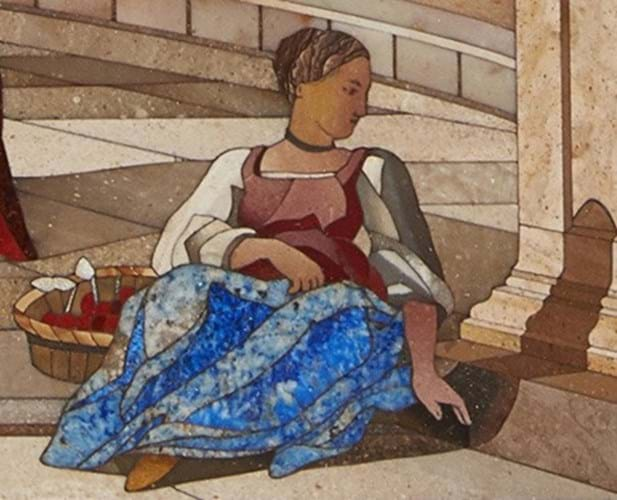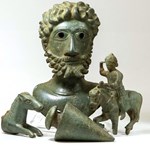
A commessi di pietre dure panel of a Venetian capriccio by the Grand Ducal Workshops, £265,000 at Roseberys.
A commessi di pietre dure panel from one of the Grand Ducal workshops’ most celebrated commissions far exceeded expectations at Roseberys’ Fine & Decorative sale.
Consigned by a private London vendor without provenance, the capriccio of Venice in cut stone was catalogued as 19th century but subsequent research revealed it was made in Florence, c.1750-60. In its gilt bronze frame it measured 17 x 20in (42 x 50cm).
Pre-sale international interest ensured 12 phone lines were booked on February 21, alongside online bidding and room participation. Bidding lasted nearly 11 minutes, with two phones battling it out to £265,000 (plus 25% buyer’s premium).
The panel sold to the European trade.

A detail of commessi di pietre dure panel sold for £265,000 at Roseberys.
Using rare hard and soft stones and intricate workmanship to create a picture with remarkable spatial recession, the design is thought to be by the Florentine vedute painter Giuseppe Zocchi (1711-67).
He was hired in 1750 by Louis Siriès, director of the Grand-Ducal workshops, to produce a series of 60 designs for Francis Stephen of Lorraine (1708-65), Holy Roman Emperor and consort of Maria Theresia of Austria.
Made between 1750-60, at least 29 of these panels were sent to Vienna where they remain in the Hofburg Imperial Palace.
Series highlights
However, others from the series have occasionally surfaced on the market, with the previously ‘missing’ panel The Game of Billiards sold at Christie’s New York in December 2014 for $800,000 and Allegory of Architecture took €1.2m at Sotheby’s Paris in November 2013.
Unlike the pictures in the Hogburg that were reframed in the 1840s, both of those panels were in their original ormolu frames. The plaque at Roseberys shares the same frame.
It was in good condition apart from a hairline crack across the blue sky. The wooden back panel had been removed in the hope of revealing an inscription (some of the others have a series of numbers) but none was found.
The art of inlaying in pietre dure was prized at all the courts of Europe but it was in Florence that it reached its apogee. Ferdinand I (r. 1587- 1609) formally established the Grand-Ducal workshops at the Galleria dei Lavori in 1588. The pictorial works known as commessi di pietre dure were often incorporated into cabinets and caskets.














